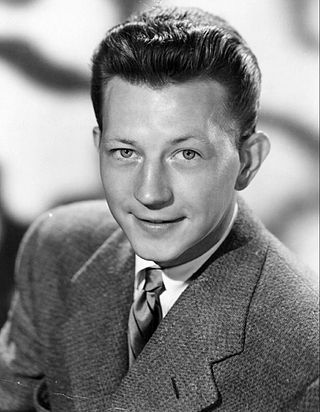
Donald David Dixon Ronald O'Connor was an American dancer, singer and actor. He came to fame in a series of films in which he co-starred, in succession, with Gloria Jean, Peggy Ryan, and Francis the Talking Mule.
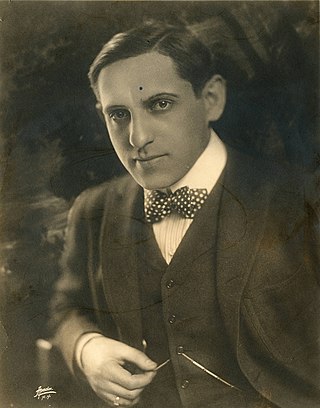
Gustave Edwards was an American composer, songwriter and film director. He also was a vaudevillian, organised his own theatre companies and was a music publisher.
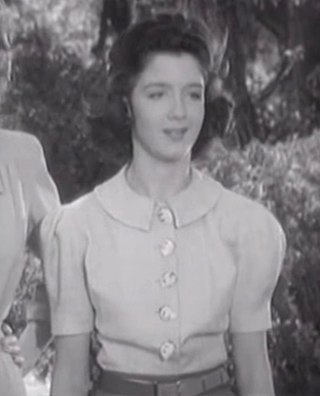
Margaret O'Rene Ryan was an American dancer and actress, best known for starring in a series of movie musicals at Universal Pictures with Donald O'Connor and Gloria Jean.
The Our Gang personnel page is a listing of the significant cast and crew from the Our Gang short subjects film series, originally created and produced by Hal Roach which ran in movie theaters from 1922 to 1944.

Ann Marie Blyth is an American retired actress and singer. For her performance as Veda in the 1945 Michael Curtiz film Mildred Pierce, Blyth was nominated for an Academy Award for Best Supporting Actress. She is one of the last surviving stars from the Golden Age of Hollywood cinema, and became the oldest acting Academy Award nominee upon the death of Angela Lansbury in 2022.
Thomas Edward Rall was an American actor, ballet dancer, tap dancer, and acrobatic dancer who was a prominent featured player in 1950s musical comedies. He later became a successful operatic tenor in the 1960s, making appearances with the Opera Company of Boston, the New York City Opera, and the American National Opera Company.
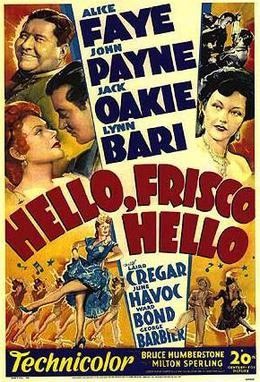
Hello, Frisco, Hello is a 1943 American musical film directed by H. Bruce Humberstone and starring Alice Faye, John Payne, Lynn Bari, and Jack Oakie. The film was made in Technicolor and released by 20th Century-Fox. This was one of the last musicals made by Faye for Fox, and in later interviews Faye said it was clear Fox was promoting Betty Grable as her successor. Released during World War II, the film became one of Faye's highest-grossing pictures for Fox.

Follow the Boys also known as Three Cheers for the Boys is a 1944 musical film made by Universal Pictures during World War II as an all-star cast morale booster to entertain the troops abroad and the civilians at home. The film was directed by A. Edward "Eddie" Sutherland and produced by Charles K. Feldman. The movie stars George Raft and Vera Zorina and features Grace McDonald, Charles Grapewin, Regis Toomey and George Macready. At one point in the film, Orson Welles saws Marlene Dietrich in half during a magic show. W.C. Fields, in his first movie since 1941, performs a classic pool-playing presentation he first developed in vaudeville four decades earlier in 1903.

Two Girls and a Sailor is a 1944 American musical film directed by Richard Thorpe and starring Van Johnson, June Allyson and Gloria DeHaven. Set on the American homefront during World War II, it's about two singing sisters who create a lavish canteen to entertain members of the military, thanks to financial contributions from a mysterious donor. The picture features a host of celebrity performances, including Jimmy Durante doing his hallmark "Inka Dinka Doo", Gracie Allen, and Lena Horne. Richard Connell and Gladys Lehman were nominated for the Academy Award for Best Original Screenplay.
Get Hep to Love is a 1942 musical film starring Gloria Jean, Donald O'Connor, Jane Frazee, Robert Paige and Peggy Ryan. The film was directed by Charles Lamont.
Mister Big is a 1943 musical directed by Charles Lamont, starring Donald O'Connor, Gloria Jean and Peggy Ryan. The film features the song "Rude, Crude, and Unattractive".
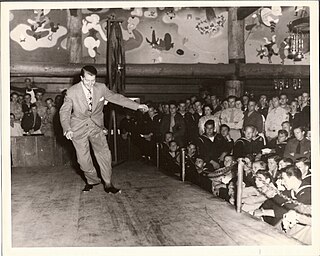
Louis Francis DaPron was an American dancer, choreographer and dance instructor. He worked often with tap dancer Donald O'Connor.

Top Man is a 1943 American black-and-white musical comedy film directed by Charles Lamont and starring Donald O'Connor, Susanna Foster, Lillian Gish, Richard Dix, and Peggy Ryan. It was O'Connor and Ryan's first film away from the third of their trio, Gloria Jean.
Chip Off the Old Block is 1944 American comedy musical film starring Donald O'Connor, Peggy Ryan, and Ann Blyth. It was Blyth's film debut.
This Is the Life is a 1944 American musical romantic comedy film directed by Felix E. Feist starring Donald O'Connor, Susanna Foster, and Peggy Ryan. It is one of the several films that Universal Studios rushed O'Connor and Ryan through before O'Connor was drafted into the Army to serve in World War II.

Bowery to Broadway is a 1944 American film starring Maria Montez, Jack Oakie, and Susanna Foster. Donald O'Connor and Peggy Ryan also had a small specialty act, and it was the only film they were in together where they did not have a name or character.

Hitting a New High is a 1937 American musical comedy film directed by Raoul Walsh. It stars Lily Pons and Jack Oakie. It was nominated for an Academy Award in 1938 in the category Best Sound Recording.
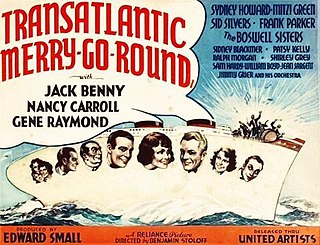
Transatlantic Merry-Go-Round is a 1934 American drama film with musical and comedic elements, directed by Benjamin Stoloff.
The Jivin' Jacks and Jills were a twentieth century American dance group of the World War II era.
Patsy O'Connor was an American actress and entertainer who achieved fame as a young child for her vaudeville performances. She also performed on Broadway and in film.











